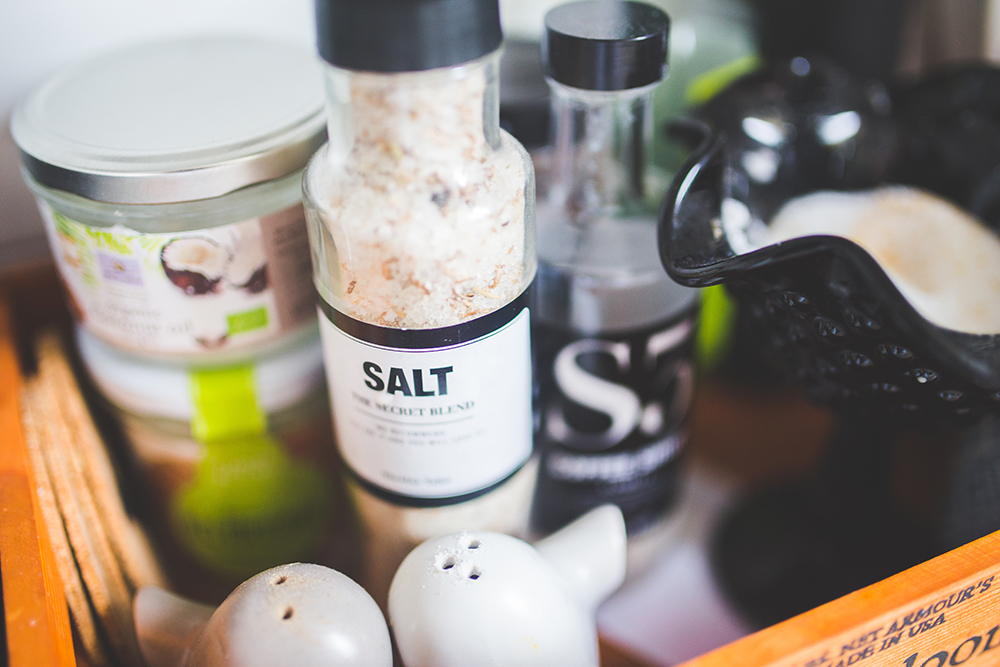Lower Blood Pressure – Avoid These 7 Foods
With high blood pressure it’s important you follow a diet low in sodium and low in fat (particularly saturated and trans fat).
Here are 7 foods to avoid:
1. Pickles
Pickles are low calorie, which is great. However, they are loaded with sodium. One medium pickle (~5 inches long) can have around 570 mg of sodium. That’s over 1/3 of your sodium limit (1500 mg) for the day.
2. Canned Chicken Noodle Soup
I know, the thought of chicken noodle soup sounds warm and comforting . . . but beware! A one cup serving can contain up to 880 mg.
3. Sauerkraut
It’s a low calorie and a great way to add vegetables to a bratwurst, right? Nope. A half cup may only have ~13 calories, but it also provides you over 460 mg of sodium.
4. Fast Food French Fries
Yes, many fast food chains are now frying their fries up in trans fat free oil (but not all!); French fries still provide a large dose of fat and sodium. A medium serving of fries provides ~19 grams of fat and 270 mg of sodium.
5. Bacon
I don’t really count this as a meat. It’s mostly fat with three slices carrying 4.5 grams of fat and ~270 mg of sodium. Opt for lower sodium varieties and try turkey bacon instead of pork. Even with these switches bacon should remain a “special treat” not an everyday indulgence.
6. Whole Milk
Dairy is a great source of calcium, but high fat dairy sources provide more fat than you need. A one cup serving of whole milk provides 8 grams of fat, 5 of which are saturated.
7. Frozen pot pies
A single pot pie equals a serving of ~1300-1400 mg of sodium PLUS ~35 g of fat. The fat includes trans fat which you want to eliminate from your diet completely and an unhealthy dose of saturated fat. Clear out your freezer.
Be sure to sign up for the free e-course 7 Natural Ways to Lower Blood Pressure at http://lowerbloodpressurewithlisa.com.
All the best,
Lisa Nelson RD
https://lisanelsonrd.com
Lower High Blood Pressure – 5 Surprising Sodium Sources

As you work to lower high blood pressure, it’s important to limit the sodium in your diet. Current recommendations are to limit your sodium intake to 2300 mg per day or less. The new 2010 Dietary Guidelines will be released this year and it looks like sodium recommendations are going to be reduced even further to 1500 mg per day for all Americans (not just those with high blood pressure!).
Many studies repeatedly find significant decreases in systolic and/or diastolic blood pressure with a reduction in sodium intake.
Surprising sodium sources
Are you young, active, consuming a healthy diet, AND still diagnosed with high blood pressure?
I’ve been receiving several questions related to this recently, so wanted to address it. Here’s an example of a question:
I am and always have been thin. I do not smoke, do not drink alcohol, eat a very healthy diet high in fruits/vegetables and low in processed foods, exercise daily, and get plenty of rest. I have been diagnosed with high blood pressure. What do I do?
In this situation the standard steps you need to take to lower high blood pressure do not necessarily apply. That doesn’t mean be lazy, don’t exercise, and eat a high fat diet. That means you need to work with your physician for a full evaluation/lab work to determine the cause of your high blood pressure, since you do not have the typical causes of high blood pressure (overweight, poor diet, etc.). Once this is known you’ll be able to outline a plan of action appropriate for your situation.
All the best,
Lisa Nelson RD
7 Natural Ways to Lower High Blood Pressure
http://lowerbloodpressurewithlisa.com
How Flexible Are You?
Here are three simple tests to gauge your current flexibility level:
1. Lower Body Flexibility
- Sit on a chair with your back straight.
- Keep one foot on the floor and raise the other leg to be parallel to the floor.
- If you can raise your leg to thigh height without shift position or raising your other foot you have a decent range of motion in your lower body.
2. Upper Body Flexibility
High Blood Pressure and Flexibility – What do they have to do with each other?
Flexibility refers to the ability of your joints to move through a full range of motion. How flexible you are in a particular joint is connected to the muscle length that attaches to that joint and how far that muscle will stretch. Having flexibility in your muscles allows for greater movement around joints. The shorter and less flexible the muscle, the tighter the joint.
What Does Flexibility Have to Do with High Blood Pressure?
High Blood Pressure Linked to Dementia
It’s well known high blood pressure increases your risk for stroke. A stroke occurs when blood flow to an area of the brain is blocked and brain cells become deprived of oxygen and die. Individuals with high blood pressure are 4-6 times more likely to have a stroke. An individual’s risk of having a stroke is directly related to how elevated their blood pressure is.
Now there is evidence linking high blood pressure with dementia and the risk is also directly related to how high your blood pressure is.



